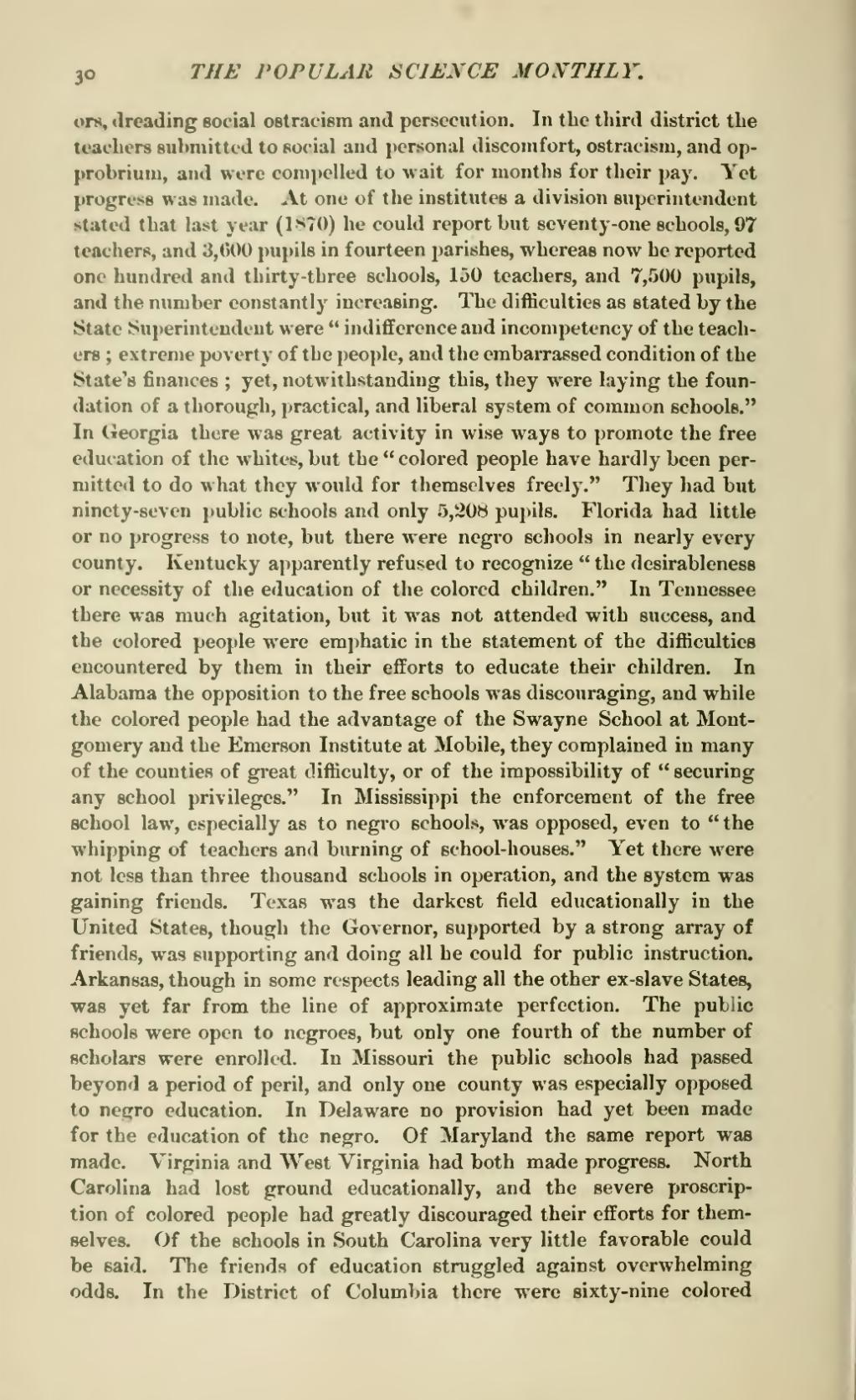ors, dreading social ostracism and persecution. In the third district the teachers submitted to social and personal discomfort, ostracism, and opprobrium, and were compelled to wait for months for their pay. Yet progress was made. At one of the institutes a division superintendent stated that last year (1870) he could report but seventy-one schools, 97 teachers, and 3,600 pupils in fourteen parishes, whereas now he reported one hundred and thirty-three schools, 150 teachers, and 7,500 pupils, and the number constantly increasing. The difficulties as stated by the State Superintendent were "indifference and incompetency of the teachers; extreme poverty of the people, and the embarrassed condition of the State's finances; yet, notwithstanding this, they were laying the foundation of a thorough, practical, and liberal system of common schools." In Georgia there was great activity in wise ways to promote the free education of the whites, but the "colored people have hardly been permitted to do what they would for themselves freely." They had but ninety-seven public schools and only 5,208 pupils. Florida had little or no progress to note, but there were negro schools in nearly every county. Kentucky apparently refused to recognize "the desirableness or necessity of the education of the colored children." In Tennessee there was much agitation, but it was not attended with success, and the colored people were emphatic in the statement of the difficulties encountered by them in their efforts to educate their children. In Alabama the opposition to the free schools was discouraging, and while the colored people had the advantage of the Swayne School at Montgomery and the Emerson Institute at Mobile, they complained in many of the counties of great difficulty, or of the impossibility of "securing any school privileges." In Mississippi the enforcement of the free school law, especially as to negro schools, was opposed, even to "the whipping of teachers and burning of school-houses." Yet there were not less than three thousand schools in operation, and the system was gaining friends. Texas was the darkest field educationally in the United States, though the Governor, supported by a strong array of friends, was supporting and doing all he could for public instruction. Arkansas, though in some respects leading all the other ex-slave States, was yet far from the line of approximate perfection. The public schools were open to negroes, but only one fourth of the number of scholars were enrolled. In Missouri the public schools had passed beyond a period of peril, and only one county was especially opposed to negro education. In Delaware no provision had yet been made for the education of the negro. Of Maryland the same report was made. Virginia and West Virginia had both made progress. North Carolina had lost ground educationally, and the severe proscription of colored people had greatly discouraged their efforts for themselves. Of the schools in South Carolina very little favorable could be said. The friends of education struggled against overwhelming odds. In the District of Columbia there were sixty-nine colored
Page:Popular Science Monthly Volume 28.djvu/38
Appearance

